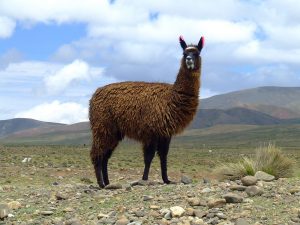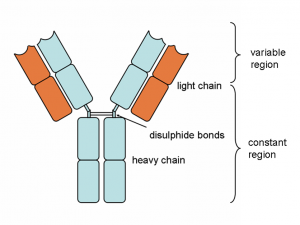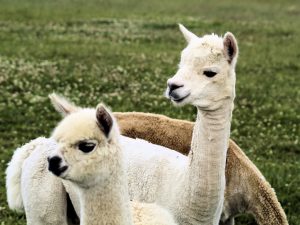By Emma Goldberg
 Scientists around the world are racing to find a cure for COVID-19, the disease caused by the new coronavirus, that has become a global pandemic. Researchers in the US and Belgium may have discovered the key to a cure: a furry, goofy, lovable llama!
Scientists around the world are racing to find a cure for COVID-19, the disease caused by the new coronavirus, that has become a global pandemic. Researchers in the US and Belgium may have discovered the key to a cure: a furry, goofy, lovable llama!
Meet Winter: a 4-year old, chocolate brown llama, with long eyelashes and ears that point in nearly opposite directions. Winter and 130 of her closest llama friends live on a research farm in Belgium where they’re helping researchers engineer special antibodies, called nanobodies, that can neutralize and fight COVID-19.
 Antibodies are an important part of our immune systems and work to fight off dangerous bacteria and viruses. Humans produce one kind of antibody, pictured in the figure to the right, which is made up of heavy (blue) and light (orange) protein chains. Together, these chains form a Y shape. Llamas produce two types of antibodies; one is similar in size to human antibodies, but the second is significantly smaller. This smaller antibody, called a nanobody, is less than half the size of a human antibody, and this small size contributes to the llama’s special, virus-fighting abilities. Sharks also have these small nanobodies — but they’re not nearly as cuddly or well-tempered as llamas!
Antibodies are an important part of our immune systems and work to fight off dangerous bacteria and viruses. Humans produce one kind of antibody, pictured in the figure to the right, which is made up of heavy (blue) and light (orange) protein chains. Together, these chains form a Y shape. Llamas produce two types of antibodies; one is similar in size to human antibodies, but the second is significantly smaller. This smaller antibody, called a nanobody, is less than half the size of a human antibody, and this small size contributes to the llama’s special, virus-fighting abilities. Sharks also have these small nanobodies — but they’re not nearly as cuddly or well-tempered as llamas!
Nanobodies have several properties that make them useful candidates for treating human diseases, including COVID-19. The first is their size. Nanobodies are so small that they can access small crevices on the surface of viruses. Think of how a puppy can squeeze under the couch to get a ball, but an adult dog doesn’t quite fit! Being able to squeeze into tight spaces is especially important for fighting COVID-19 and other coronaviruses, as their surfaces are covered in spiky proteins. The next important nanobody property is how easily they can be manipulated. Nanobodies can be fused or linked with other antibodies, including human antibodies, and remain stable. Nanobodies are also incredibly stable, which means they can survive in the harshest environments of the human body, like the stomach or the gut! This also means they can be administered, or given, in multiple ways including orally or through an IV. Discovering llama nanobodies and being able to understand their special properties is helping researchers develop treatments for human diseases.
While we’ve been focused on COVID-19 research and treatment, this actually isn’t the first time Winter and her friends have sparked the interest of virus researchers. This same group of llamas was involved in studies that identified antibodies against SARS and MERS — two viral “cousins” of COVID-19. Back in 2016, Dr. Xavier Saelens, of Ghent University in Belgium, and Dr. Jason McLellan, of University of Texas, injected Winter and her pals with the spiky surface proteins from SARS and MERS. The researchers then took a sample of her blood and found two antibodies that fought separately against each virus. When the COVID-19 crisis began, the researchers used the identified antibodies to try and fight off the novel coronavirus in cell cultures. And it worked! The antibodies from Winter inhibited COVID-19 from infecting cells. Their findings are published in Cell and you can  find a link to the text here. This research is still very preliminary and there is much work to do to make sure that injecting humans with llama antibodies is safe. Finding this antibody, though, is a huge breakthrough for scientists and has made Winter a hero!
find a link to the text here. This research is still very preliminary and there is much work to do to make sure that injecting humans with llama antibodies is safe. Finding this antibody, though, is a huge breakthrough for scientists and has made Winter a hero!
Edited by Lane Scher and Rami Major

